10 Wildest Beauty Trends Throughout History That Prove Truth Is Indeed Stranger Than Fiction
If you thought swallowing tapeworms to lose weight or having a dimple being a standard of beauty cannot get any more bizarre, think again. Believe it or not, people actually did that! Throughout history, from ancient civilizations to modern times, people have gone to extraordinary lengths in pursuit of beauty. Some practices are too weird to believe that they were once very much a reality.
1. Tiny feet
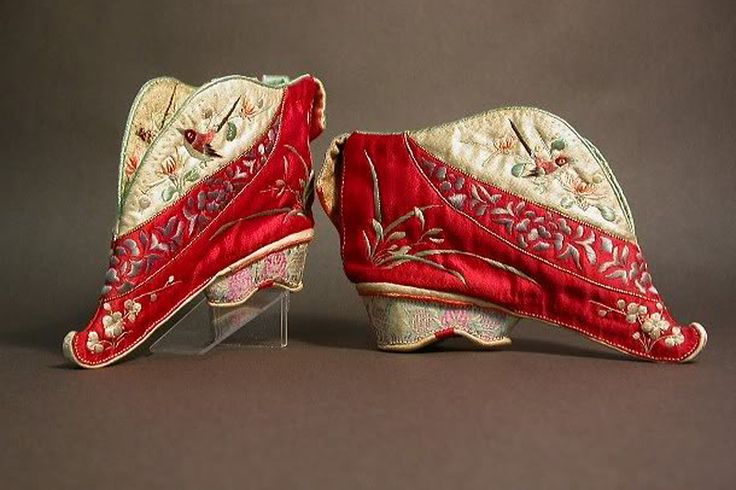
In 13th century China, a beauty trend known as the Golden Lotus emerged. It involved binding girls’ feet from a young age to achieve tiny, deformed feet, symbolizing beauty but causing immense pain.
Girls aspired to possess a 3-inch foot, a symbol of the most desirable bride. To achieve this, they bound their feet tightly to transform their natural shape and grow their toes downward to resemble a lotus shoe.
It is said that Emperor Li Yu of the Southern Tang Dynasty required his concubine to bind her feet with white silk into the shape of a crescent moon. She danced gracefully over golden lotus flowers and the emperor was totally enchanted. Inspired by her beauty, women across China began to mimic her appearance, leading to the widespread adoption of foot binding.
Over time, foot binding became prevalent across different social classes. For the poor it promised a brighter, more prosperous future. Despite the pain involved in the process, girls endured it in hopes of securing a higher-status husband through arranged marriages.
2. Goat hair unibrows
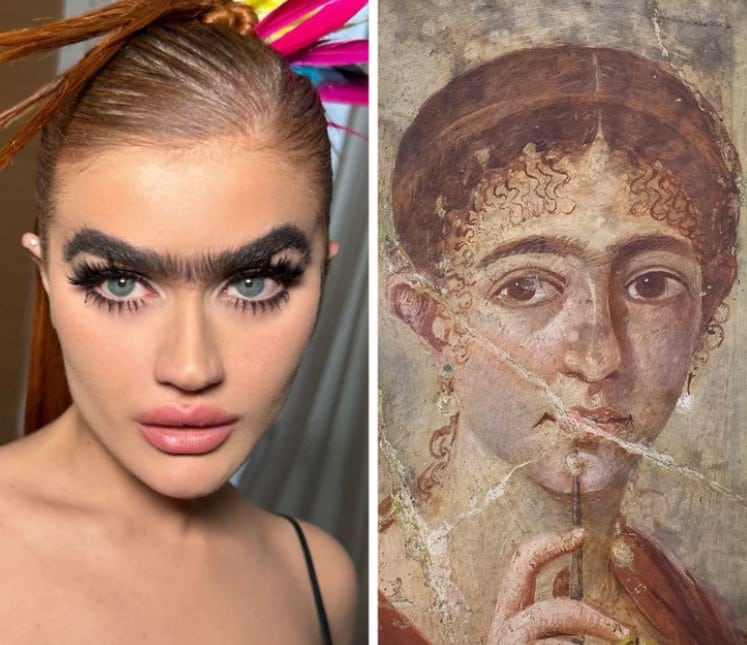
In ancient times, the famous mathematician Pythagoras introduced the Golden Ratio, a mathematical concept connecting balance, symmetry, and beauty. This ratio suggested that symmetrical faces were considered the most attractive, influencing beauty standards across various cultures, including Ancient Greece.
Interestingly, in Ancient Greece, a unibrow was deemed desirable for women. To achieve this look, some women would use goat hair glued together with tree resin and dyed black to create a unibrow effect. Others would fill in the space between their eyebrows with charcoal to simulate a natural unibrow.
While many historical beauty standards may seem outdated today, Pythagoras’ Golden Ratio still holds relevance. According to Pythagoras’ Golden Ratio, the supermodel Bella Hadid is the most beautiful woman on Earth – even without a unibrow.
3. Eating tapeworm pills to lose weight
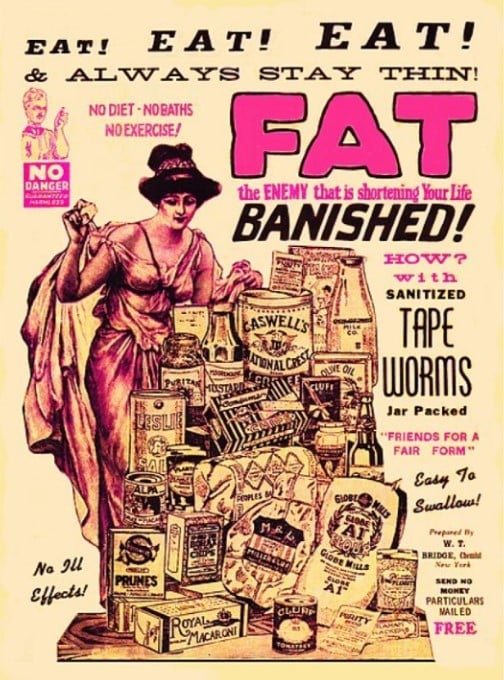
Throughout history, dietary trends have come and gone, but perhaps none were as bizarre as the tapeworm diet craze of the early 1900s.
In this peculiar regimen, dieters would swallow beef tapeworm cysts, often in the form of a pill. The idea was that these tapeworms would mature in the intestines, absorbing nutrients and leading to weight loss. However, the process was far from pleasant, often resulting in side effects like diarrhea and vomiting.
Once the desired weight was reached, dieters would take an antiparasitic pill in hopes of killing off the tapeworms. However, the process didn’t end there; the dieter then had to expel the tapeworm, which could lead to abdominal and rectal complications.
The risks associated with the tapeworm diet were numerous. Not only could tapeworms grow up to 30 feet in length, but they could also cause a range of illnesses, including headaches, eye problems, meningitis, epilepsy, and dementia.
“During the 19th Century dieting became big business,” says food historian Annie Gray. “Advertising was becoming more and more sophisticated, with more and more diet products being peddled.”
Foxcroft says that the diet industry boom was also down to the rise in celebrity and the media and the development of new medicines,
According to peddlers of these pills, there were no side effects.
However, as the authors of a review explain: “This was a tremendous error, since the presence of this parasite […] can cause abdominal pain and discomfort, cramps, colic, diarrhea, nausea, dizziness, vomiting, vertigo, headache, tiredness, malabsorption, anorexia, muscle pain, constipation, vitamin deficiency, anemia, intestinal obstruction, [jejunal perforation], appendicitis, and pancreatitis.”
4. Achieving the tuberculosis look
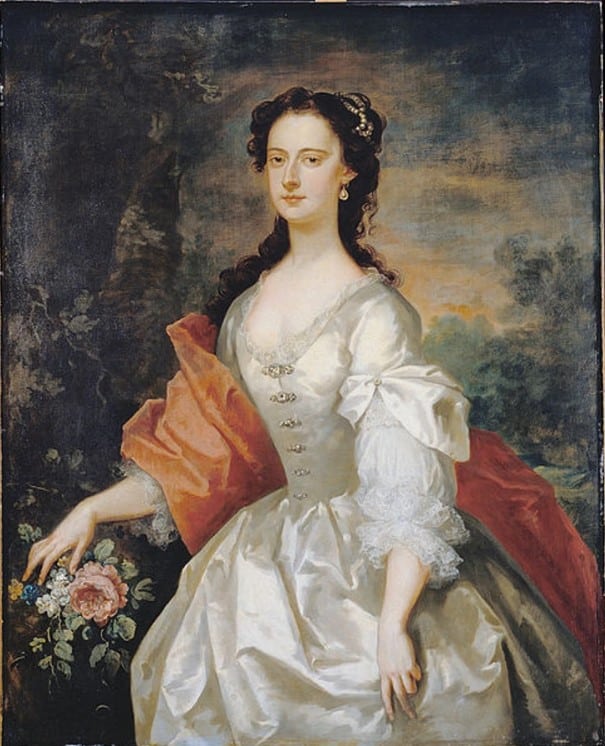
During the Victorian era, a bizarre beauty trend emerged known as the tuberculosis look. This trend glorified the effects of tuberculosis, a deadly disease that ravaged Europe and the United States in the mid-1800s. Victims of tuberculosis would gradually waste away, leaving them with pale skin and a thin appearance before succumbing to the illness.
Despite tuberculosis being a highly contagious and deadly disease, many Victorians romanticized its effects and saw them as symbols of beauty and refinement. As a result, beauty standards of the time often emphasized features associated with the disease, such as pale skin, red lips, and slim waists.
Shockingly, some women went to extreme lengths to achieve this desired aesthetic, even going so far as to purposefully contract tuberculosis. They believed that the disease would give them the desired pale complexion and thin physique.
Moreover, Victorian women also subjected themselves to the harmful practice of wearing tight corsets. These corsets not only restricted movement but also exacerbated tuberculosis by compressing the lungs and restricting blood circulation. Eventually, “health corsets” made of elastic fabric were introduced to alleviate some of the pressure caused by traditional corsets, but the damage had already been done.
5. Belladona eyes
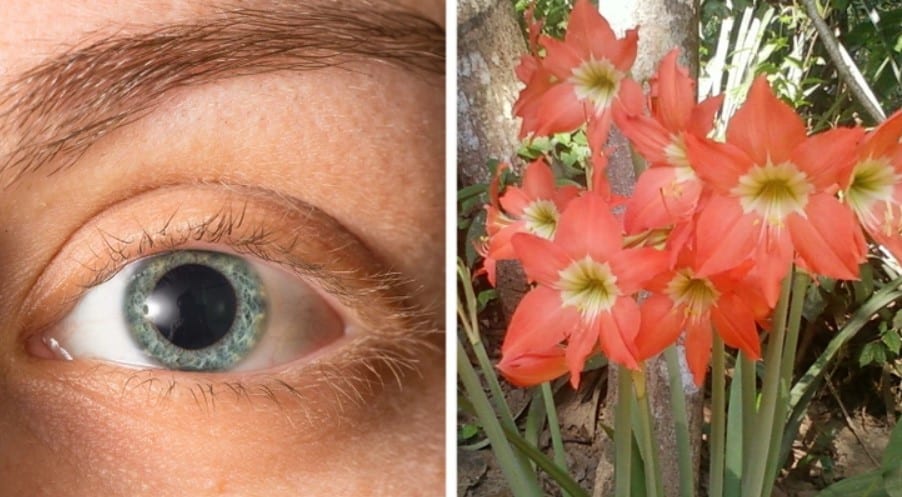
During the Renaissance in Italy, women used drops made from the belladonna plant to make their eyes look aroused. They called it “bella donna,” which means “beautiful woman” in Italian.
These drops made from belladonna dilated women’s pupils, which was considered attractive and seductive. Belladonna drops serve as a muscarinic antagonist. They work by blocking receptors in the eye muscles that usually shrink pupil size. However, it can cause side effects like minor vision distortions, trouble focusing on close objects, and a faster heart rate. Using it for too long was thought to lead to blindness.
6. Eye makeup made from dangerous chemicals
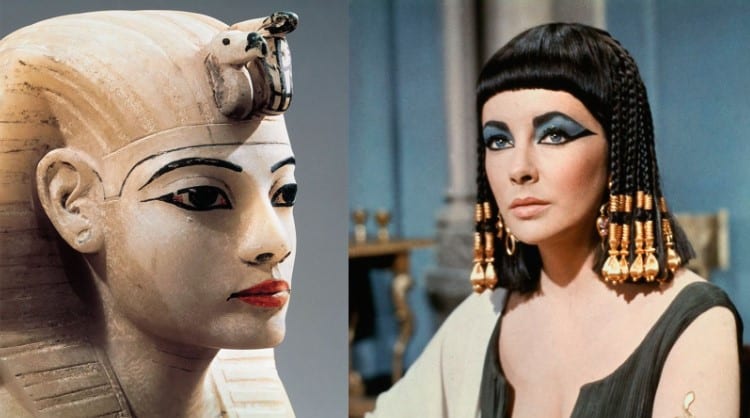
Long before makeup artists on YouTube, the people of Ancient Egypt used kohl for their eyes. Kohl, the earliest form of eyeliner, was made from galena, a type of lead sulfide, mixed with water, oil, or animal fat. Although its ingredients varied, its purpose remained consistent: to enhance eyes, brows, and sometimes other facial features.
Back in 1912, German Egyptologist Ludwig Borchardt discovered the bust of Ancient Egyptian Queen Nefertiti in Amarna, Egypt. Known for her striking features and elegance, Nefertiti’s beauty mesmerized the world—her name, “the beautiful one has come forth,” was fitting. The fascination with Nefertiti and Ancient Egypt sparked a trend that brought eyeliner into the 20th century, mirroring the bold lines of kohl that defined Nefertiti’s eyes
A small study in 2015 discovered that applying eyeliner to the waterline could lead to tiny particles entering the eye, highlighting potential risks.
7. Pigeon droppings as an anti-baldness solution
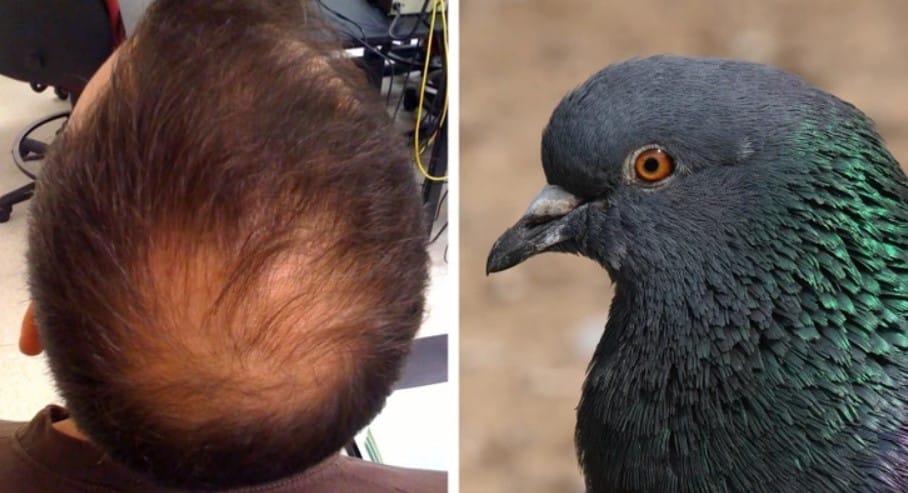
Baldness has long been a concern for people, especially for men that led to some pretty extreme remedies in the past. Take the ancient Greeks, for example. They whipped up a concoction using cumin, pigeon droppings, horseradish, and nettles, hoping to reverse hair loss. Unfortunately, this peculiar mixture didn’t do the trick.
But where did this strange recipe come from? It’s actually from the Hippocratic corpus, specifically from the gynecological treatise, Diseases of Women 2.189. Laurence Totelin translates this recipe for hair loss in women as If she loses hair, apply as a cataplasm: cumin or excrement of pigeons, or crushed radish, or with crushed onion, or beet, or nettle.
Throughout history, irritant substances have been a common ingredient in hair regrowth remedies, often mixed with something to improve the scent, like lilies and roses in some versions.
8. A dimple stamper machine
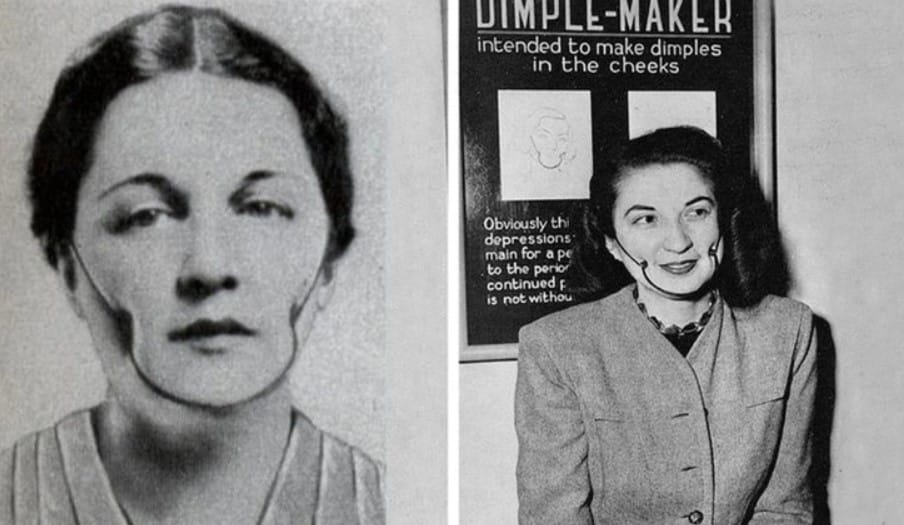
Dimples became all the rage, with everyone trying to achieve them by any means possible. Then, in 1936, Isabella Gilbert came up with The Dimple Maker, which claimed to create and deepen dimples in users. It was worn tightly around the cheeks, resembling a cross between dental gear and something from medieval times.
They came with these instructions: “Wear dimplers five minutes at a time, two or three times a day, while dressing, resting, reading or writing. Look into the mirror and laugh. There will be a semblance of a line where you should always place the dimplers until your dimples are made.”
According to History By Zim: “The American Medical Association argued that the ‘Dimple Maker’ would not make dimples or even enlarge original dimples. They also stated that prolonged use of the device may actually cause cancer.”
9. No brows and a higher hairline
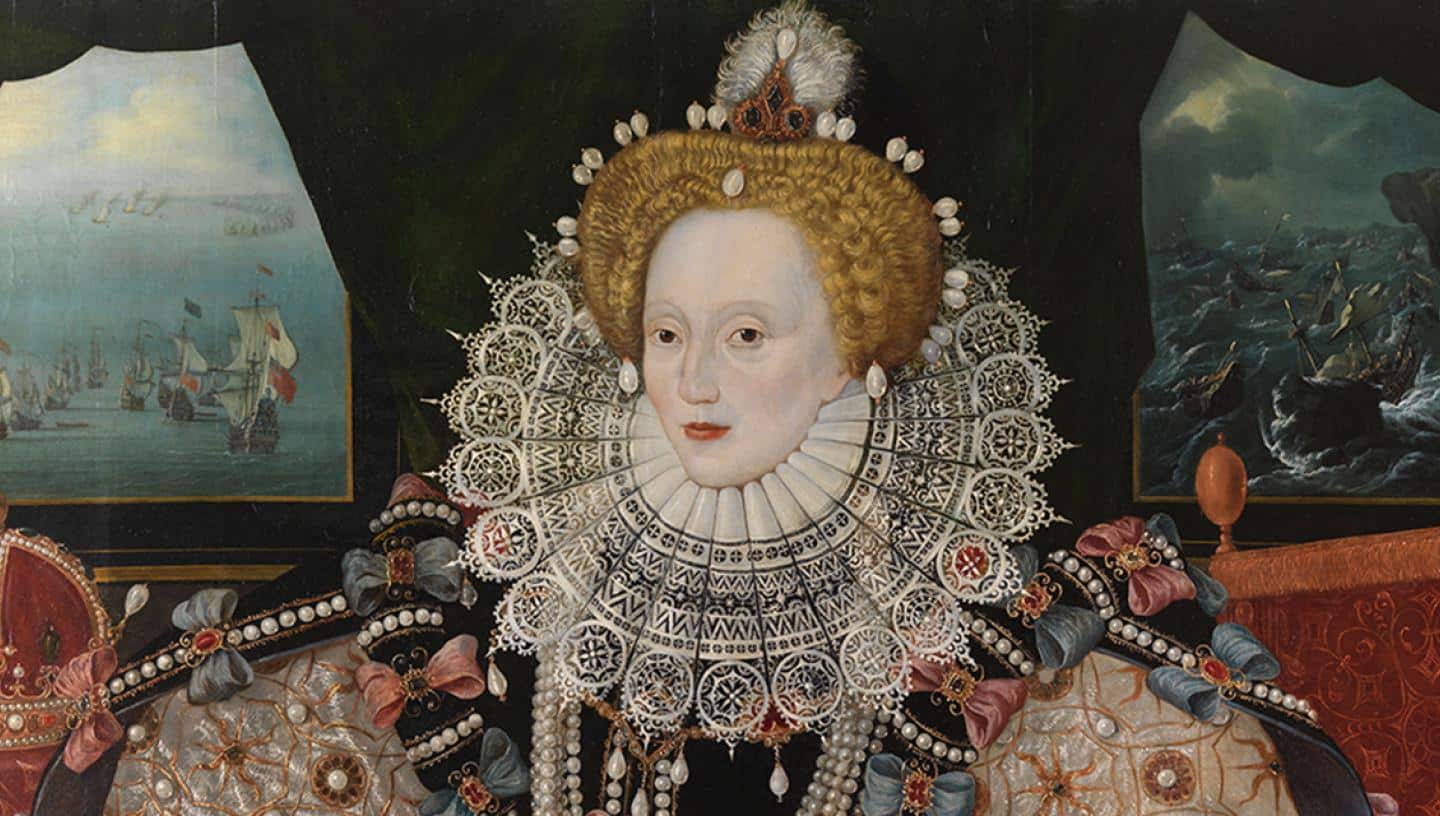
As the Queen of England, Elizabeth’s taste shapes the fashion trends of the 1500s. Known as the most powerful woman in the nation, her personal style became the epitome of elegance.
To draw attention to what was considered the focal point of a woman’s body at the time – her breasts – Elizabeth adopted the practice of plucking her eyebrows into thin lines or completely removing them, along with shaving off hair from the top of her forehead.
Then, many women mimicked this look, they used walnut oil and bandages soaked in ammonia and vinegar to remove excess hair, striving to achieve the same refined aesthetic as their monarch.
10. Black teeth

In Vietnam, a traditional practice known as teeth blackening was widespread among both the majority Vietnamese population and minority ethnic groups. Dating back to as early as 400 BCE, this practice held significant cultural and aesthetic importance. Teeth blackening was seen as a sign of beauty.
In Vietnamese culture, white teeth were associated with animals, savages, and evil spirits, while blackened teeth were believed to ward off negative energy. That’s why most women in Hanoi had blackened teeth in the 1920s.
However, achieving blackened teeth was no simple task and required professional assistance. The process was lengthy and intricate, typically performed during adolescence, with girls undergoing the procedure around the age of 13 to enhance their natural beauty in accordance with tradition.

